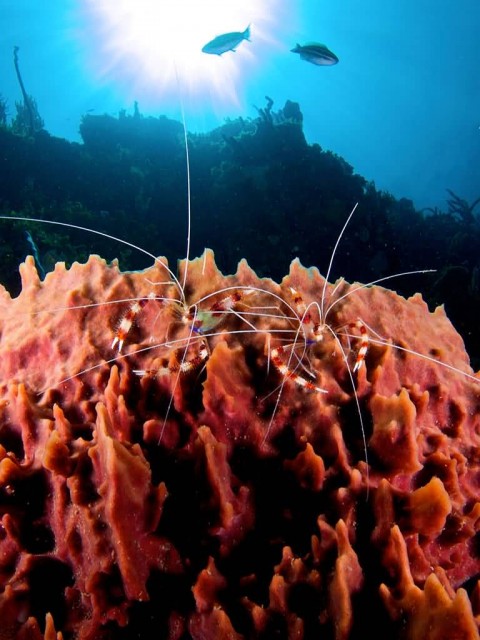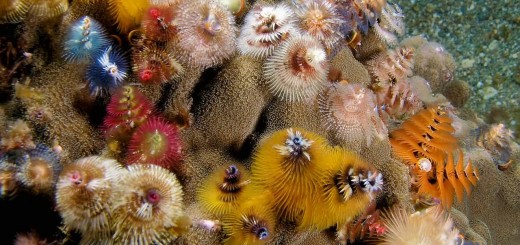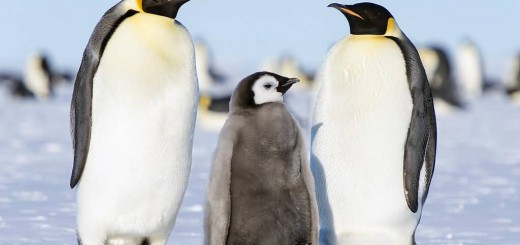10 Largest Organisms In The World

Blue Whale (Photo Credit: NOAA Photo Library / CC BY 2.0)
Blue Whale
The blue whale is a marine mammal belonging to the baleen whales. It is the largest existing animal and the heaviest that has ever existed. The length of the blue whale is 30 metres and 190 tonnes or more in weight.
The blue whale’s body can be various shades of bluish-grey dorsally and somewhat lighter underneath. They are native to North Pacific, Antarctic and Indian Ocean groups. Blue whales feed almost exclusively on krill. An adult blue whale can eat up to 40 million krills in a day.

Large Blue Whale (Photo Credit: WPPilot / CC BY-SA 3.0)
African Bush Elephant

African Elephant (Photo Credit: Punithsureshgowda / CC BY-SA 3.0)
African bush elephants are the largest living terrestrial animals, being up to 3.96 m tall at the shoulders. It is the larger of the two species of African elephant such as the African bush elephant and the African forest elephant. On average, males are 3.3 m tall and 5.5 tonnes in weight while females are 2.8 m tall and 3.7 tonnes in weight.
The most characteristic features of African elephants are their very large ears. The African bush elephant is herbivorous. Its diet varies according to its habitat. Elephants living in forests, partial deserts and grasslands all eat different proportions of herbs and tree or shrubbery leaves.

African Bush Elephant (Photo Credit: Gorgo / Public Domain)
Saltwater Crocodile

Saltwater Crocodile (Photo Credit: St. Augustine Alligator Farm/ Public Domain)
The saltwater crocodile also known as saltie, estuarine or Indo-Pacific crocodile. It is the largest of all living reptiles, as well as the largest terrestrial and riparian predator in the world. The males of this species can reach sizes up to 6.7 m and weigh up to 2,000 kg.
This species of crocodile can live in salt water, but usually resides in mangrove swamps, estuaries, deltas, lagoons and lower stretches of rivers. Saltwater crocodiles are not fastidious in their choice of food and readily vary their prey selection according to availability. Saltwater crocodiles are the most dangerous extant crocodilian to humans.

Saltwater Crocodile (Photo Credit: MartinRe / CC BY-SA 3.0)
Ostrich

Ostrich (Photo Credit: Stig Nygaard / CC BY 2.0)
The ostrich or common ostrich is either one or two species of large flightless birds. It is native to Africa. It is the largest living bird. The main characteristic are their long neck and legs. A large male ostrich can reach a height of 2.8 m and weigh over 156 kg. They can run at up to about 70 km/h.
It is the fastest land speed of any bird. The ostrich is the largest living species of bird and lays the largest eggs of any living bird about 1.4 kg. The ostrich’s mainly feed on seeds, shrubs, grass, fruit and flowers, it also eats invertebrates.

Group Of Ostriches (Photo Credit: Benh LIEU SONG / CC BY-SA 2.0)
Chinese Giant Salamander

Chinese giant salamander (Photo Credit: Micromesistius / CC BY-SA 3.0)
The Chinese giant salamander is the largest salamander and largest amphibian in the world. The length of salamander is 180 cm. It is mainly found in mountain streams and lakes in China. It has a large head, small eyes and dark and wrinkly skin. Their color ranges from dark brown to light orange. The Chinese giant salamander feeds on insects, frogs, crabs, shrimp and fish.
The female lays 400–500 eggs in an underwater breeding cavity, which is guarded by the male until the eggs hatch after 50–60 days. The giant salamander is known to vocalize, making barking, whining, hissing or crying sounds. Some of these vocalizations bear a striking resemblance to the crying of a young human child.

Chinese giant salamander (Photo Credit: Namiac / CC BY-SA 3.0)
Lion’s Mane Jellyfish

Large Lions Mane Jellyfish (Photo Credit: Dan Hershman / CC BY 2.0)
The lion’s mane jellyfish also known as hair jelly is the largest known species of jellyfish. The largest of its kind was found in 1870 in Massachusetts Bay with a recorded bell size of 2.3 metres and a tentacle length of 37 metres.
Its range is limited to cold, boreal waters of the Arctic, northern Atlantic and northern Pacific Oceans. The lion’s mane jellyfish generally use their stinging tentacles to capture prey. The jellyfish themselves feed mostly on zooplankton, small fish, ctenophores and moon jellies.

Lions Mane Jellyfish (Photo Credit: Arnstein Rønning / CC BY 3.0)
Japanese Spider Crab

Japanese Spider Crab (Photo Credit: Mark Doliner / CC BY 2.0)
The Japanese spider crab is a species of marine crab that lives in the waters around Japan. It has the largest leg span of any arthropod, reaching up to 3.8 metres and weighing up to 19 kg.
The Japanese spider crab is an omnivore. It is consuming both plants and animals. They live at depths of 150–300 metres. The Japanese spider crab is occasionally collected for food. Populations of this species of crab have decrease over recent years and there are many efforts to protect them.

Japanese Spider Crabs (Photo Credit: TypeZero / CC BY-SA 3.0)
Goliath Beetles
The Goliath beetles are among the largest insects on Earth if measured in terms of size, bulk and weight. Goliath beetles can be found in many of Africa’s tropical forests. They feed primarily on tree sap and fruit.
Goliath beetles measure from 60–110 mm for male and 50–80 mm for female. Adults can reach weights of up to 80–100 grams. The females range from a dark brown to silky white, but the males are normally brown/white/black or black/white.

Goliath Beetles (Photo Credit: Didier Descouens / CC BY-SA 3.0)
Giant Clam

Gaint Clam (Photo Credit: Nhobgood / CC BY-SA 3.0)
The giant clam is the largest living bivalve mollusk. It is one of the most endangered clam species. This creature weighed 270 kg and had an axial length of 1.14 m. It can be found off high or low elevation islands, in lagoons or fringing reefs. The largest known Giant clam specimen measured 137 cm. It was discovered around 1817 on the north western coast of Sumatra. The weight of the two shells was 230 kg.

Gaint Clam (Photo Credit: NOAA Photo Library / CC BY 2.0)
Giant Barrel Sponge

Giant Barrel Sponge (Photo Credit: NOAA Photo Library / CC BY 2.0)
The giant barrel sponge is one of the largest species of sponge found in the Caribbean. It grows at depths from 10 metres down to 120 metres. It is brown-grey to reddish in colour with a hard or stony texture.
The giant barrel sponge has been called the “redwood of the reef” because of its lifespan of up to 2000 years as well as its size and colour. It grows very slowly and its growth rate slows down as the sponge’s size increases. The giant barrel sponge is a filter feeder. Water is continually being pumped through the interior of the sponge.

Giant Barrel Sponge (Photo Credit: Nhobgood / CC BY-SA 3.0)















